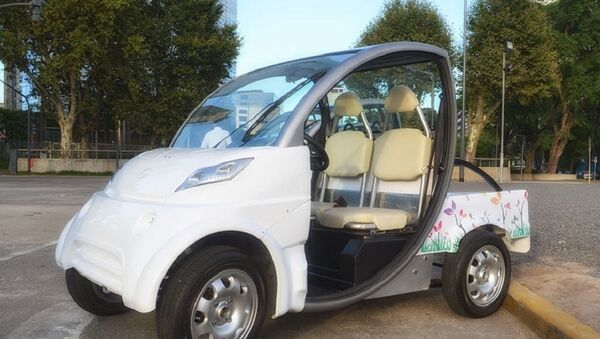Pablo Naya, head of the Sero Electric development project, told Sputnik Mundo that their vehicle does not require specialized recharging stations and can replenish its energy reserves via a standard power outlet.
"Our car allows you to travel 100 kilometers for the price of 12 pesos (79 cents), while traveling the same distance using an ordinary car would cost you about 200 Argentine pesos. The environmental and economic benefits are obvious. But while purchasing the vehicle will be profitable in the long run, it will take some time for people to appreciate this," Naya said.
He also remarked that while their company, which is based in La Matanza, Argentina, has already received a number of purchase proposals for Sero Electric from Chile, Brazil and Mexico. But the new electric car cannot be sold at home because the L6 vehicle category to which it belongs doesn't accommodate vehicles like this one.
"L6 belongs to the motor vehicle category, and since our car can only reach the speed of 45 kilometers per hour, safety regulations prevent it from being driven on the streets and highways. So we have to wait for proper regulations to come into effect before we can sell the cars locally," he said.
In 2016 the company produced 150 electric cars, and 500-600 more vehicles may be manufactured in the next year if the L6 category gets properly regulated in Argentina as Naya hopes.
Electric cars are not very popular in South America due to their relatively high cost and the fact that the locals are not fully aware of the advantages of this technology.
"Electric mobility remains pretty expensive in the world. The Europeans have already realized the advantages of this method of transportation and their authorities support it. This effectively lowers their (electric cars) cost and allows them to travel on ordinary roads. In South America however companies don’t have enough resources to invest into electric cars. You can find independent developers but not factories, and the high cost directly affects the manufacturing process. People here still do not fully understand the advantages of this technology," Naya concluded.








